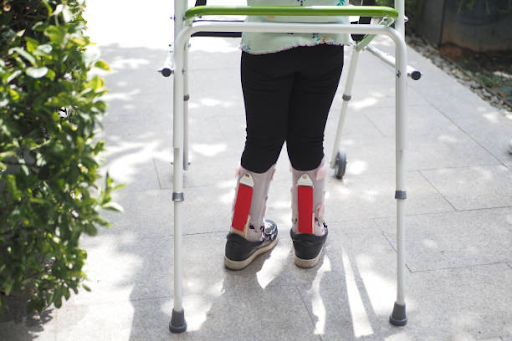Pediatric walkers or children walkers are specially constructed mobility aids that assist those who are young enough to be independent and balanced and are also able to walk better. A pediatric walker is designed to fulfill both developmental needs of a child compared to ordinary adult walkers which are practical and safe. Health practitioners, parents, and caregivers would generally consider these devices as essential to children that cannot move due to developmental delays, trauma, or disease.
The given guide gives a thorough preview of walkers in the children and pediatric walker, its advantages, types, usage and considerations that one should make before settling on the appropriate model.
Understanding Walkers for Children
Children walkers are medical devices which are aimed to assist in the development of walking and movement. They occur frequently in children with cerebral palsy, muscular dystrophy, spina bifida or other children who have undergone orthopedic surgery. A pediatric walker is not a mobility device alone, it is a means to foster self-sufficiency, self-confidence and socialization.
Unlike the baby walkers, which are normally discouraged since they are unsafe, the therapists and doctors do not object to the use of the pediatric walkers as structured assisting aid which assists in healthy development and provides stability. These services are helpful in helping children to participate in activities in everyday life, communication with other children, and physical therapy courses.
Benefits of a Pediatric Walker
There are several benefits of a child using a pediatric walker to both the child and their families. The greatest advantages are:
Independence and Confidence
Child walkers also allow children to learn about the surrounding without depending on people so much. This autonomy leads to self-esteem and encourages children to perform daily chores.
Safety and Stability
Safety is one of the major functions of a pediatric walker. The stable frame lowers the chances of falls and provides controlled mobility both outdoors and indoors.
Social Participation
With the help of walkers, children can participate in the activities with siblings, friends, and classes. This social inclusion assists to enhance mental health, communication, and general health.
Types of Walkers for Children
Pediatric walkers are of various types to suit various needs. It will depend on the age of the child, the level of mobility and the medical needs.
Posterior Pediatric Walker
The child is put in front of a posterior walker. It develops a straight posture and natural motion, as the child would pull the walker forward. This design is frequently advised to the kids that have little support requirements but are in need of balance help.
Anterior Pediatric Walker
In front of the child is an anterior walker. It offers greater stability and is suited better towards people who need extra stability when walking. Lots of prior models are equipped with wheels to make them easier to move.
Gait Trainers
A gait trainer is a high-tech walker that is designed to assist children. It has additional support features that include pelvic harness, chest pads and forearm rests. These are the devices that are suggested to be used by children with more complex mobility issues.
Wheeled Pediatric Walkers
Certain child walkers are loaded with either fixed or swivel wheels. These aids contribute to easier movement over a surface, decrease strain during walking, and allow smoother movement.
Choosing the Right Pediatric Walker
When choosing the right pediatric walker a careful evaluation should be made. To make sure that the walker will address both the physical and the developmental needs of the child, parents and caregivers should take into account several factors.
Medical Evaluation
It is important to have a professional assessment of a physical therapist or a pediatric doctor prior to choosing a walker. Based on the condition of the child, his or her strength and therapy objectives, medical experts prescribe the best model.
Lifestyle and Environment
Certain walkers excel indoors whereas others do excel outdoors. The families are to think over the environments where the child is going to use the device the most often.
How to Use a Pediatric Walker Effectively
Pediatric walkers must be gradually introduced. It might take some time before children are able to adapt and gain confidence when using the device. The initial period should be under the supervision of the caregivers to maintain a good posture and safe usage. With time, children are able to learn how to maneuver in order to participate more and more in the activities.
Cost and Insurance Coverage
Walkers cost child walkers are priced differently based on their features, design and the manufacturer. Basic anterior or posterior models tend to be less expensive and gait trainers and advanced walkers may cost more. In most insurance plans there would be coverage of the walker cost of the child when a doctor prescribes them. Families are also advised to seek financial options with the healthcare providers as well as the insurance representatives.
Conclusion
Pediatric walkers or walkers for children are very critical in establishing independence, confidence and development. They assist not only in mobility but also in life-changing, which create possibilities of social engagement and development. The decision on the appropriate pediatric walker should be made with special attention to medical recommendations, adjustability, security, and comfort. Having the appropriate equipment, children will be able to gain more independence and live a more active and satisfying life.
YOU MAY ALSO LIKE: Home-Based Individualized ABA Therapy: Building Children to Thrive

